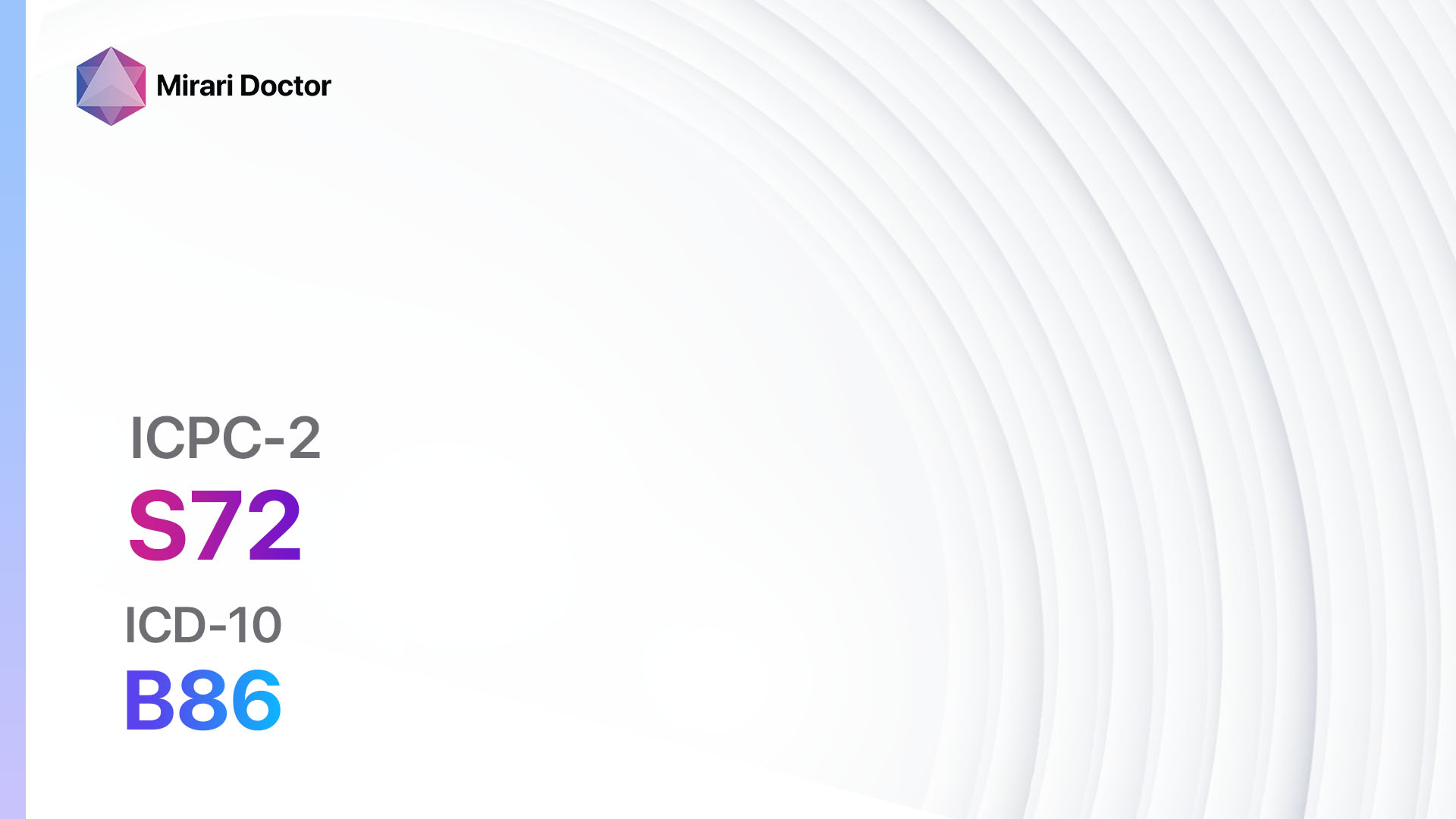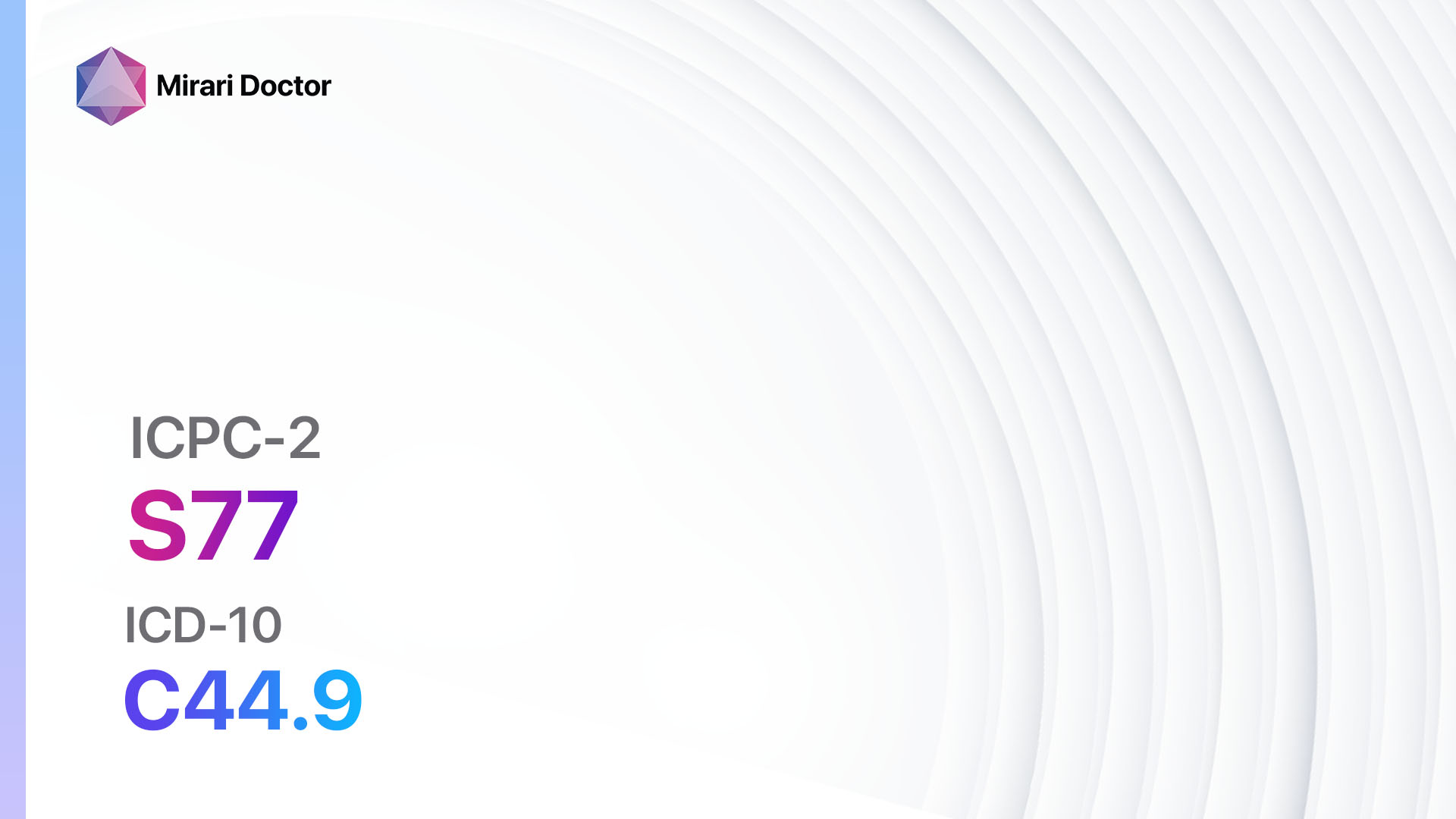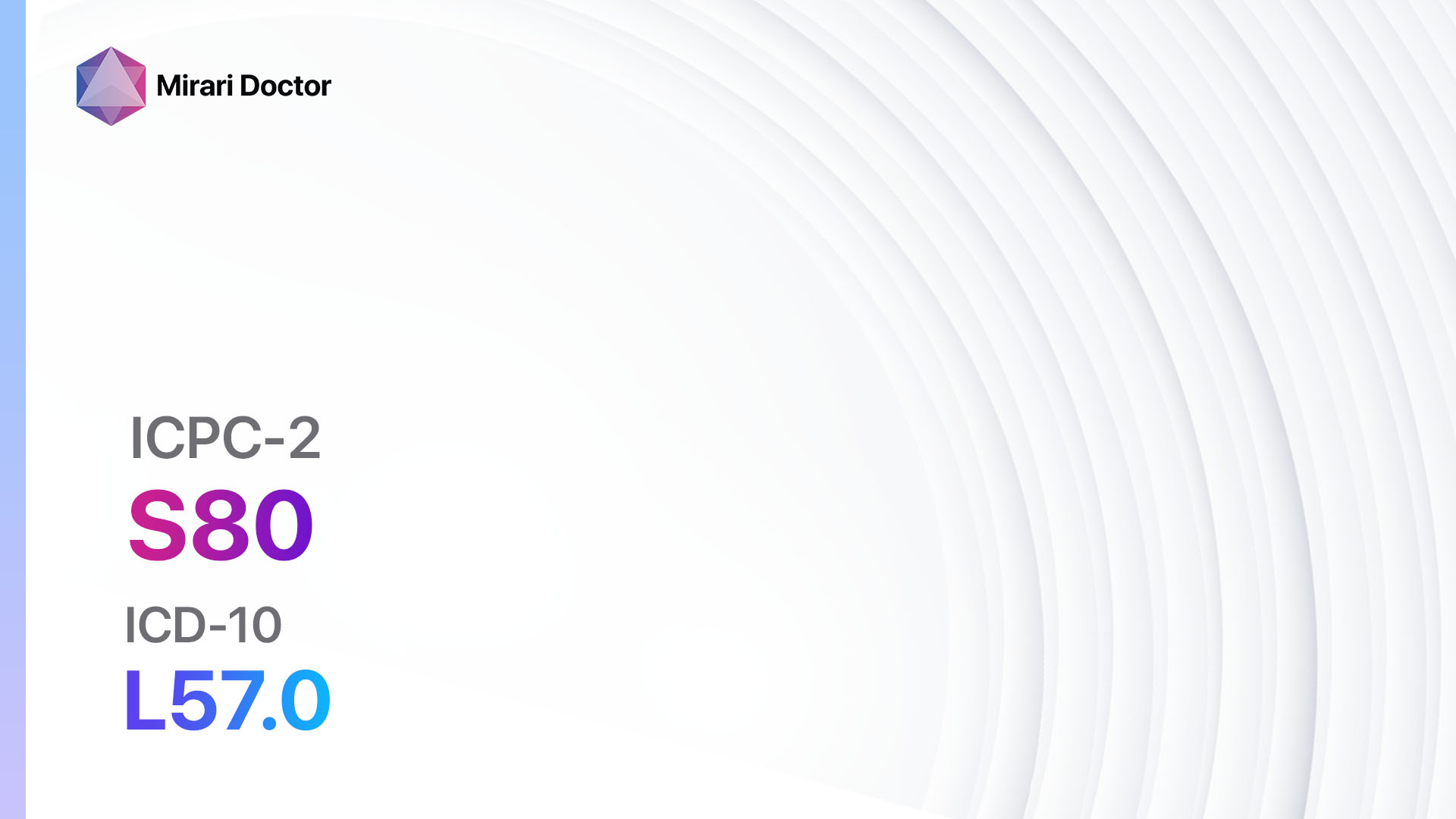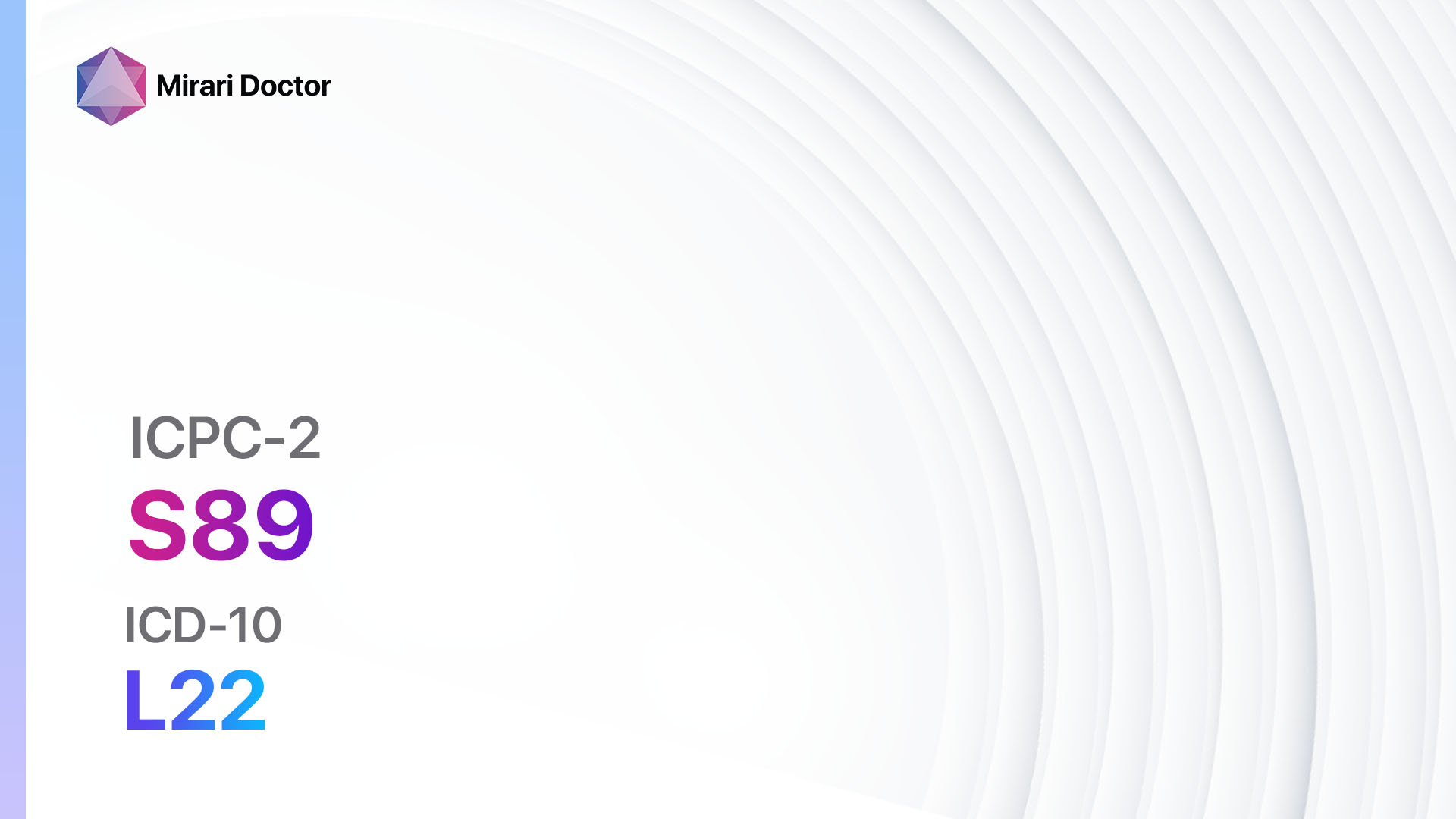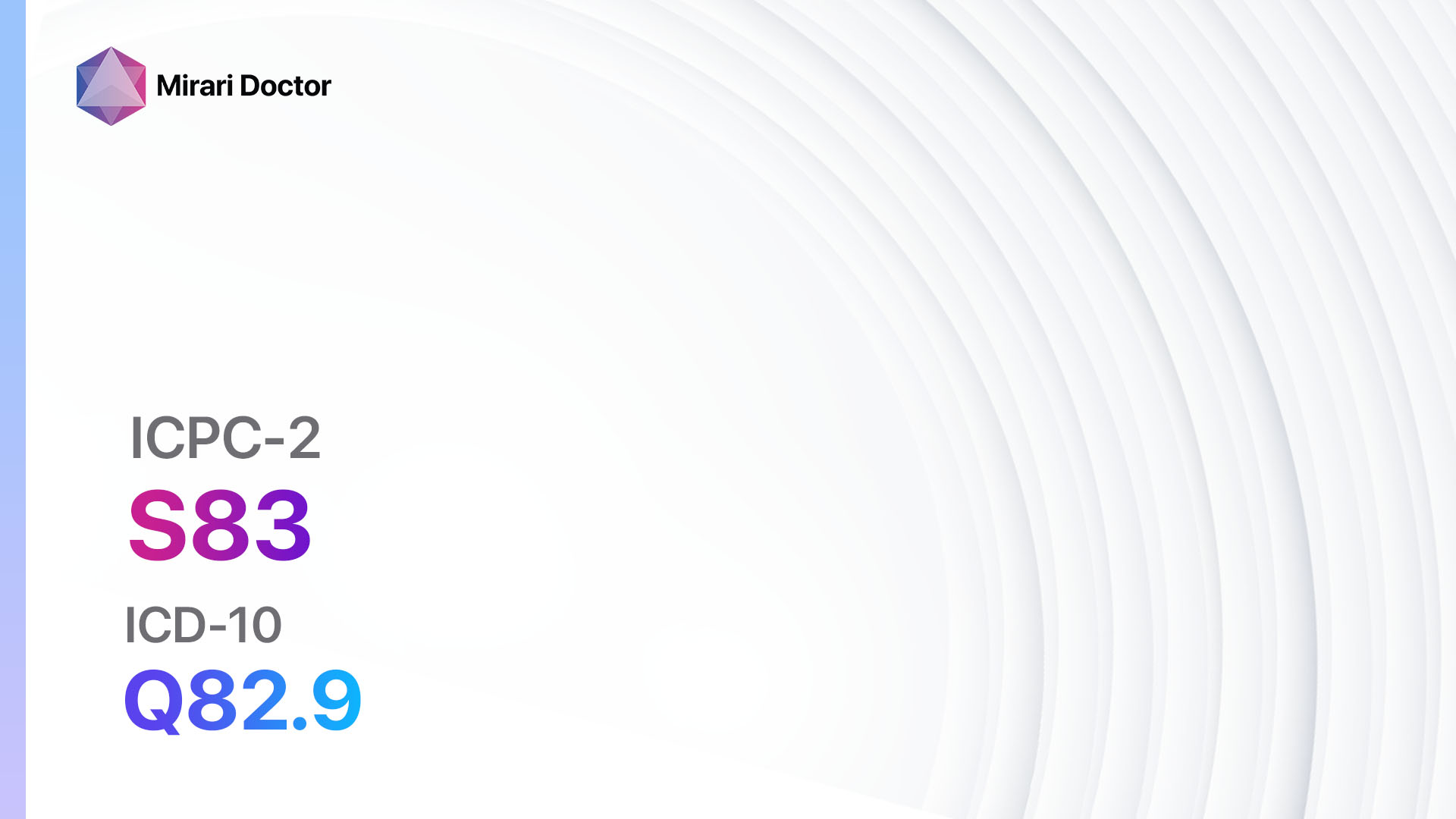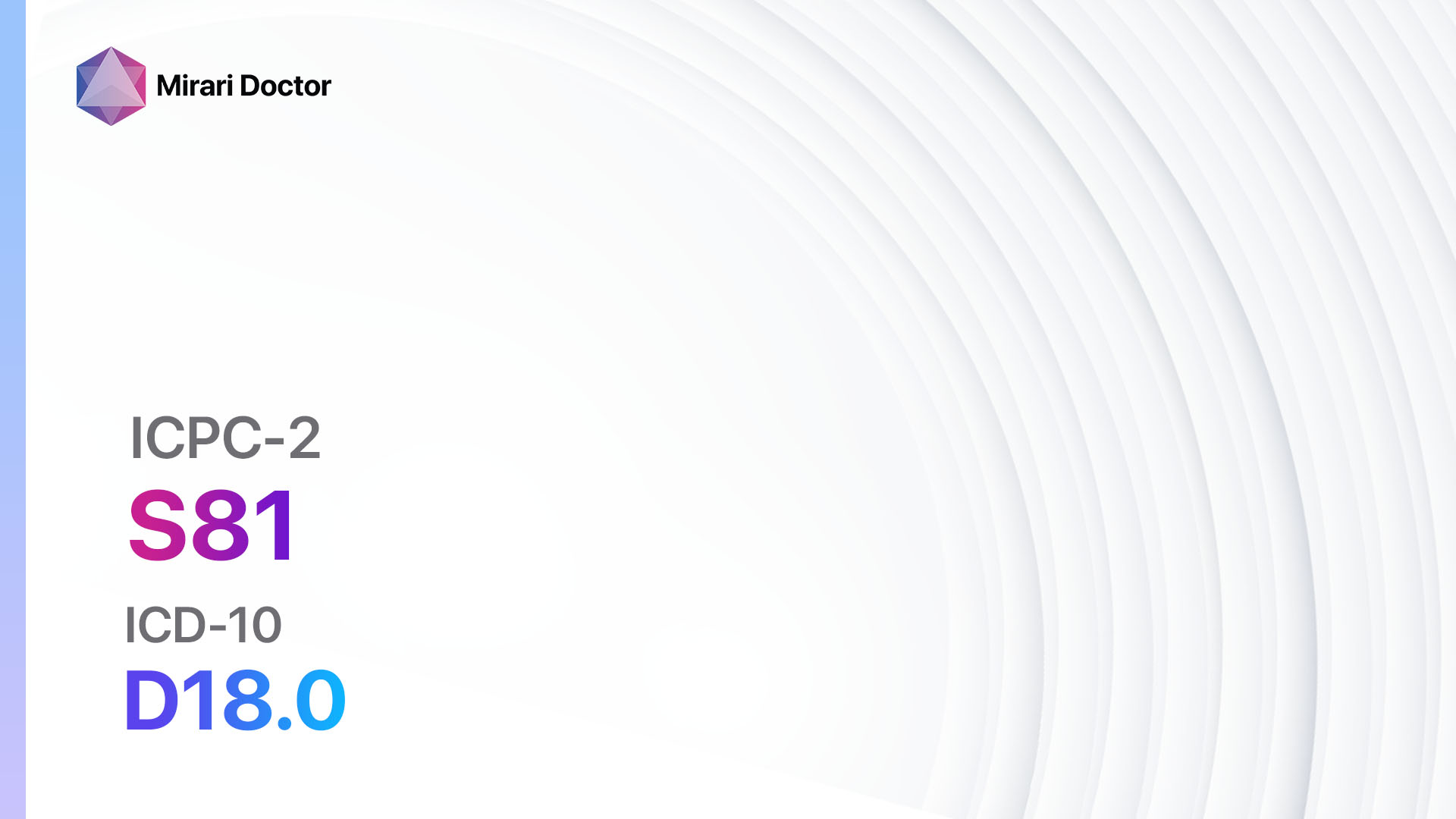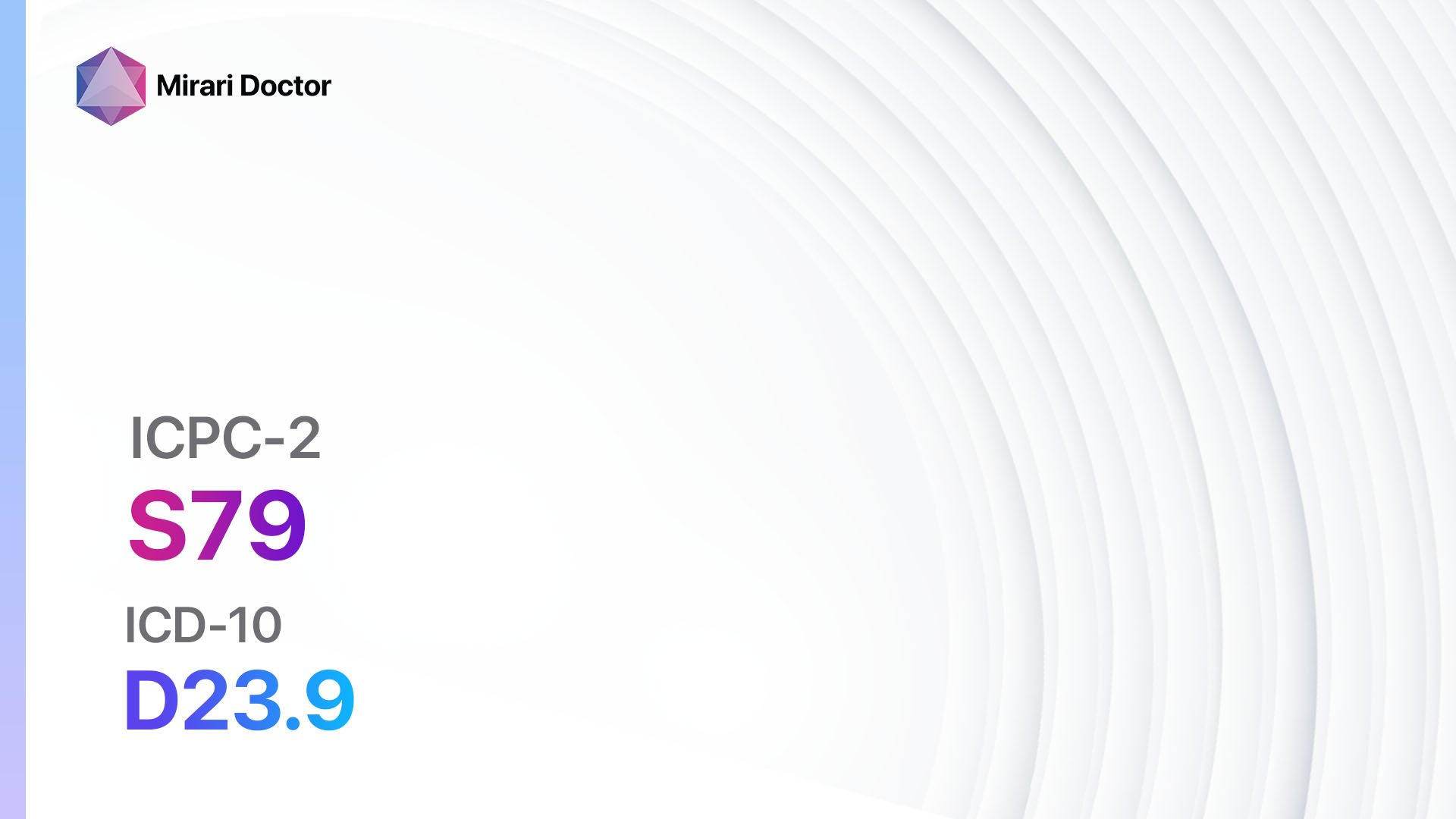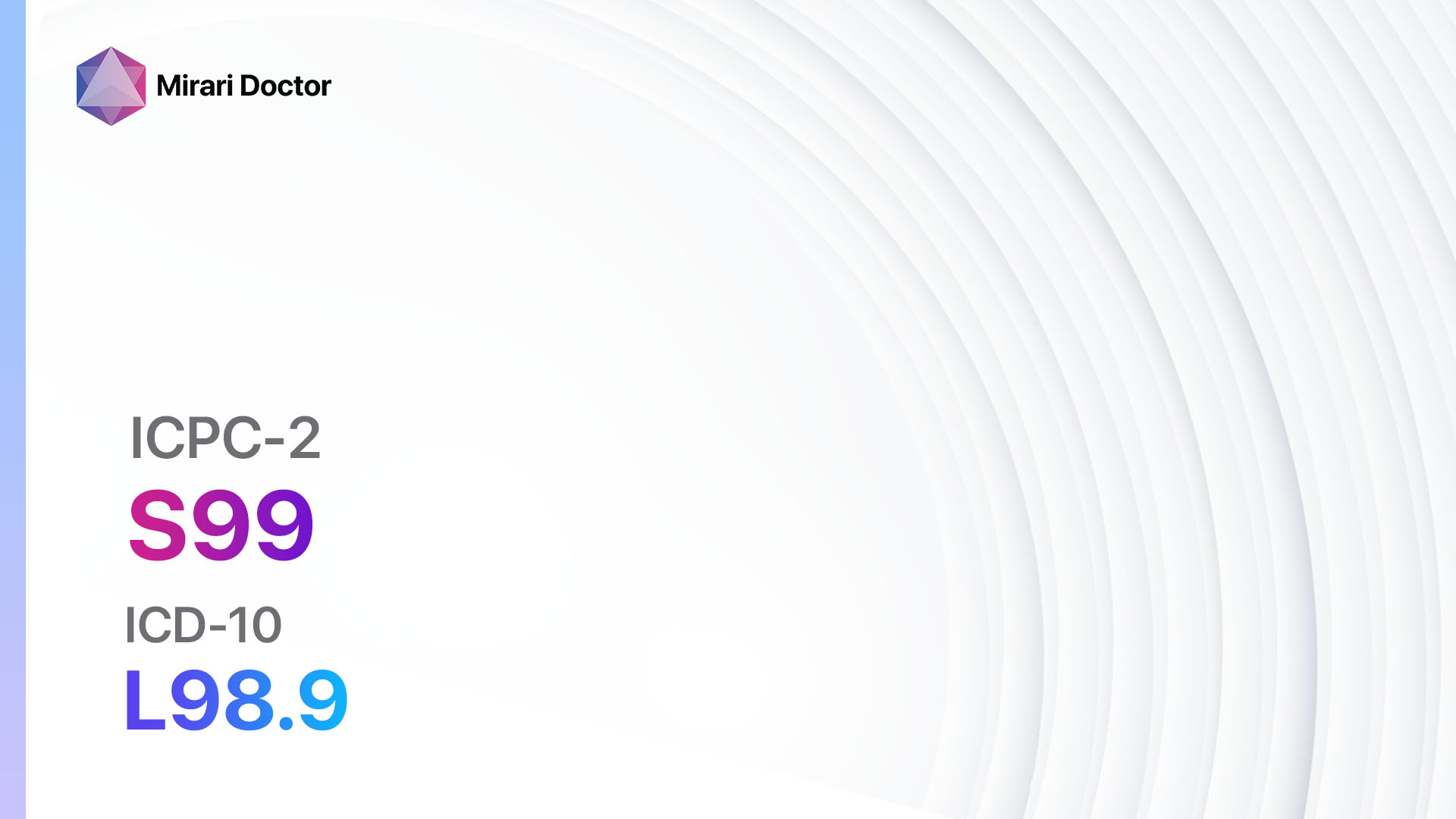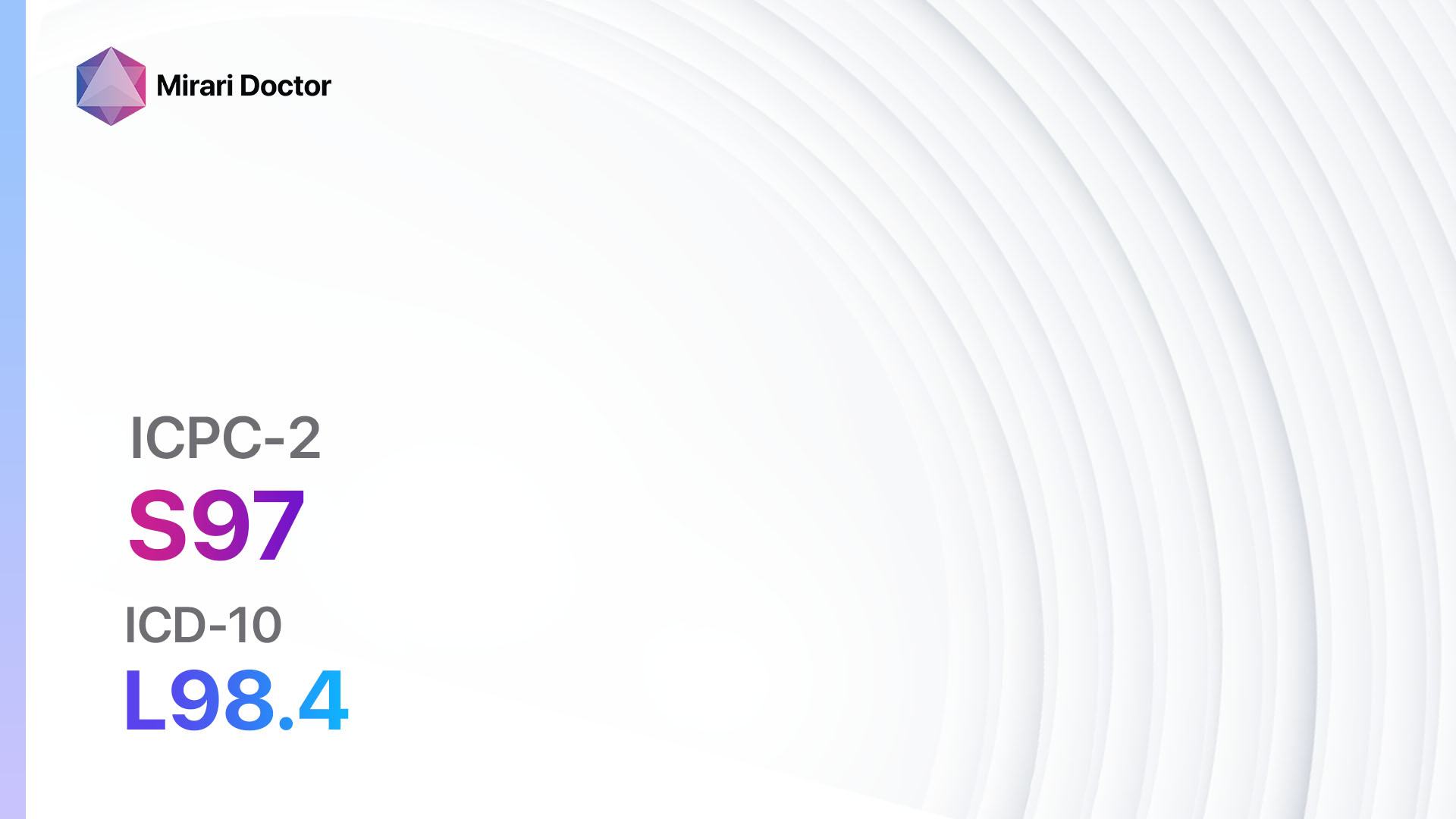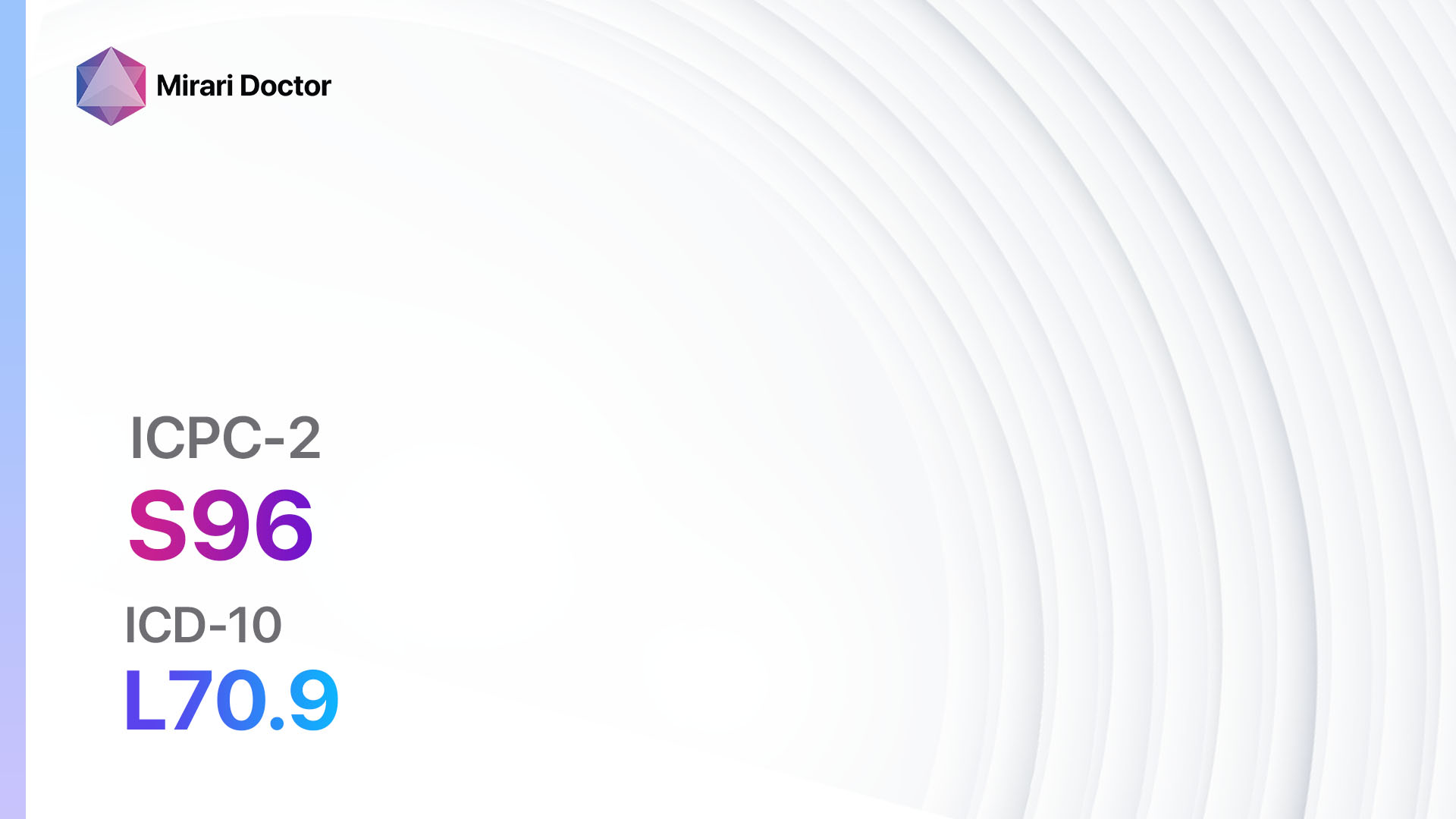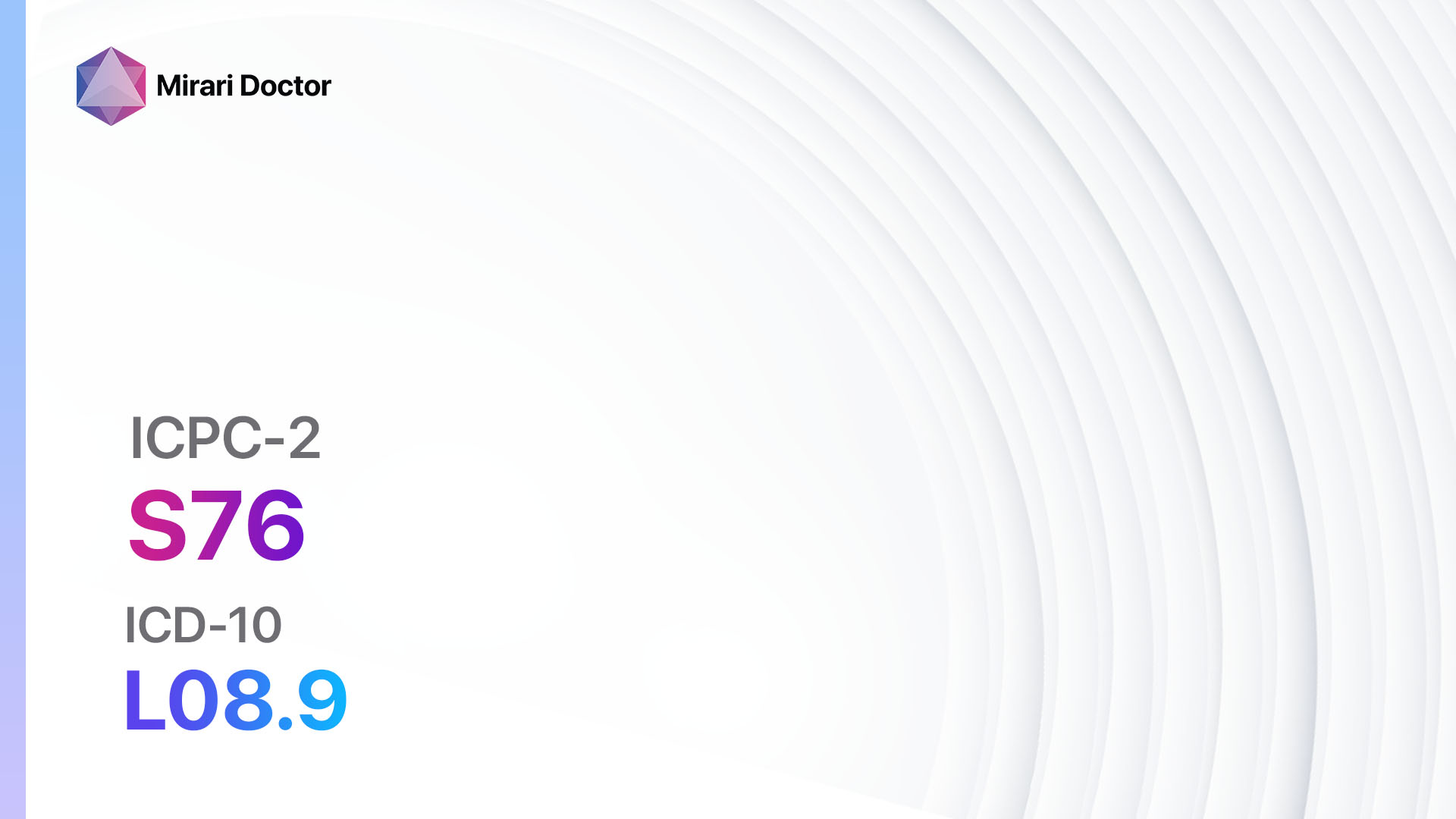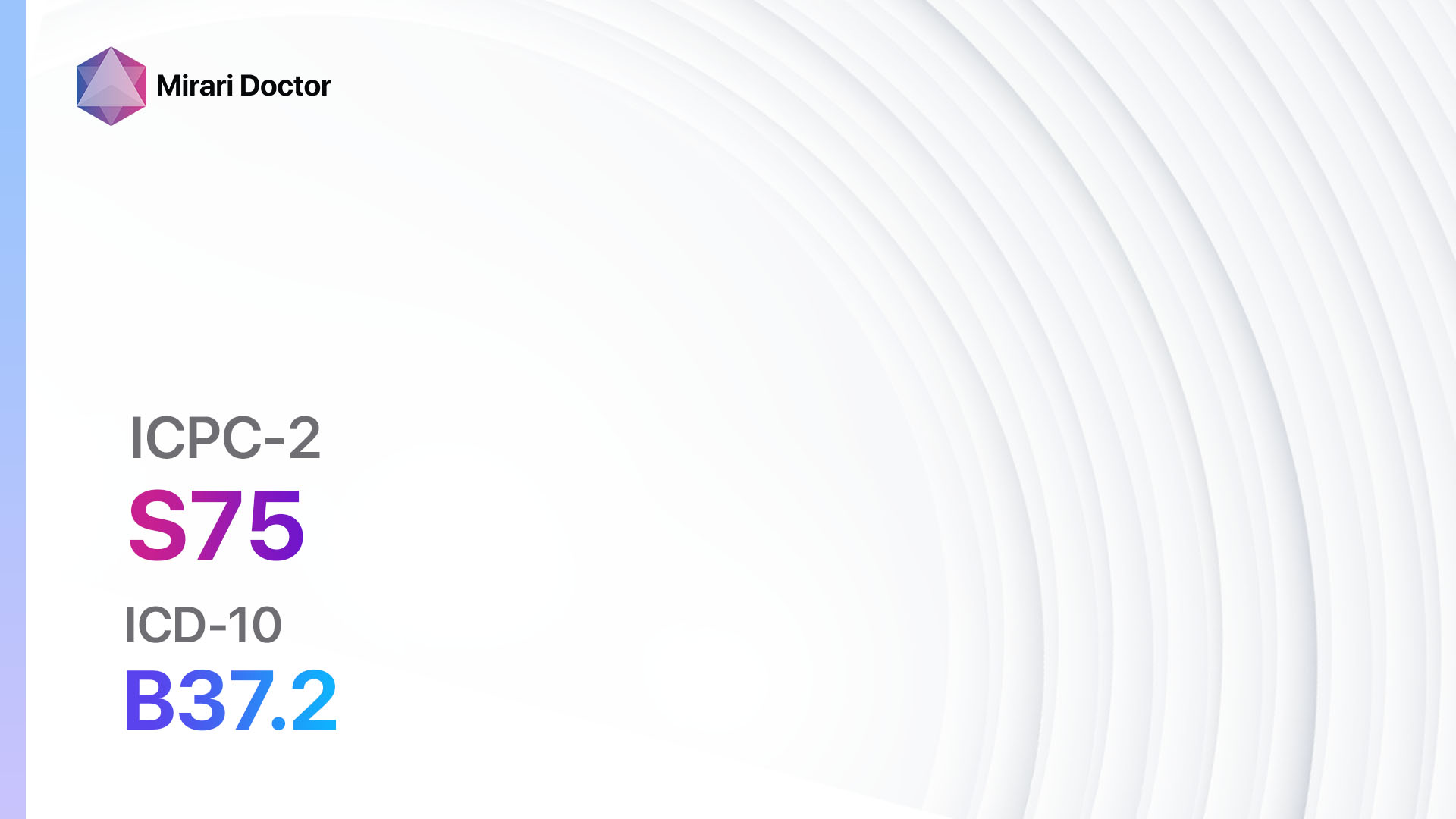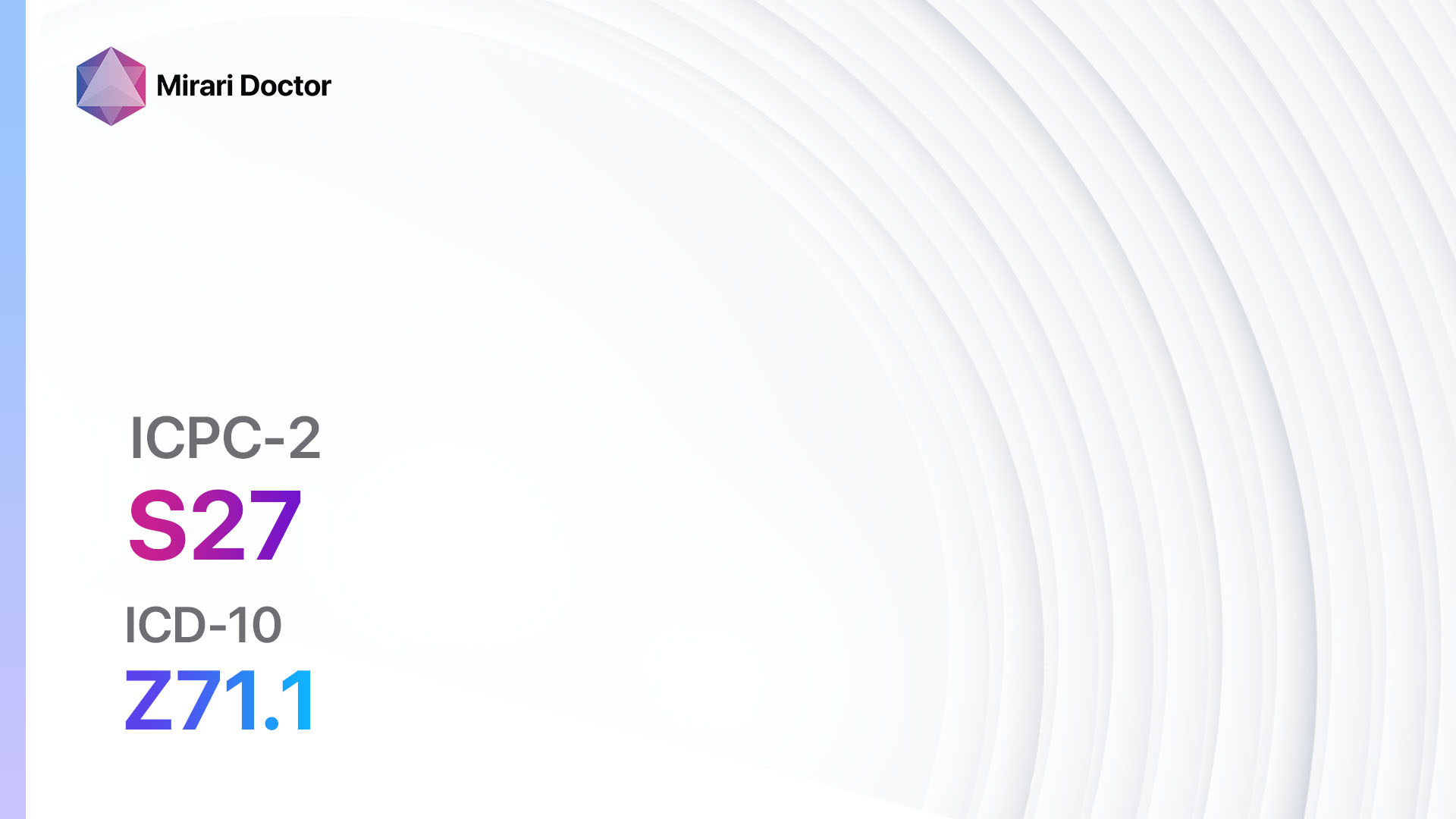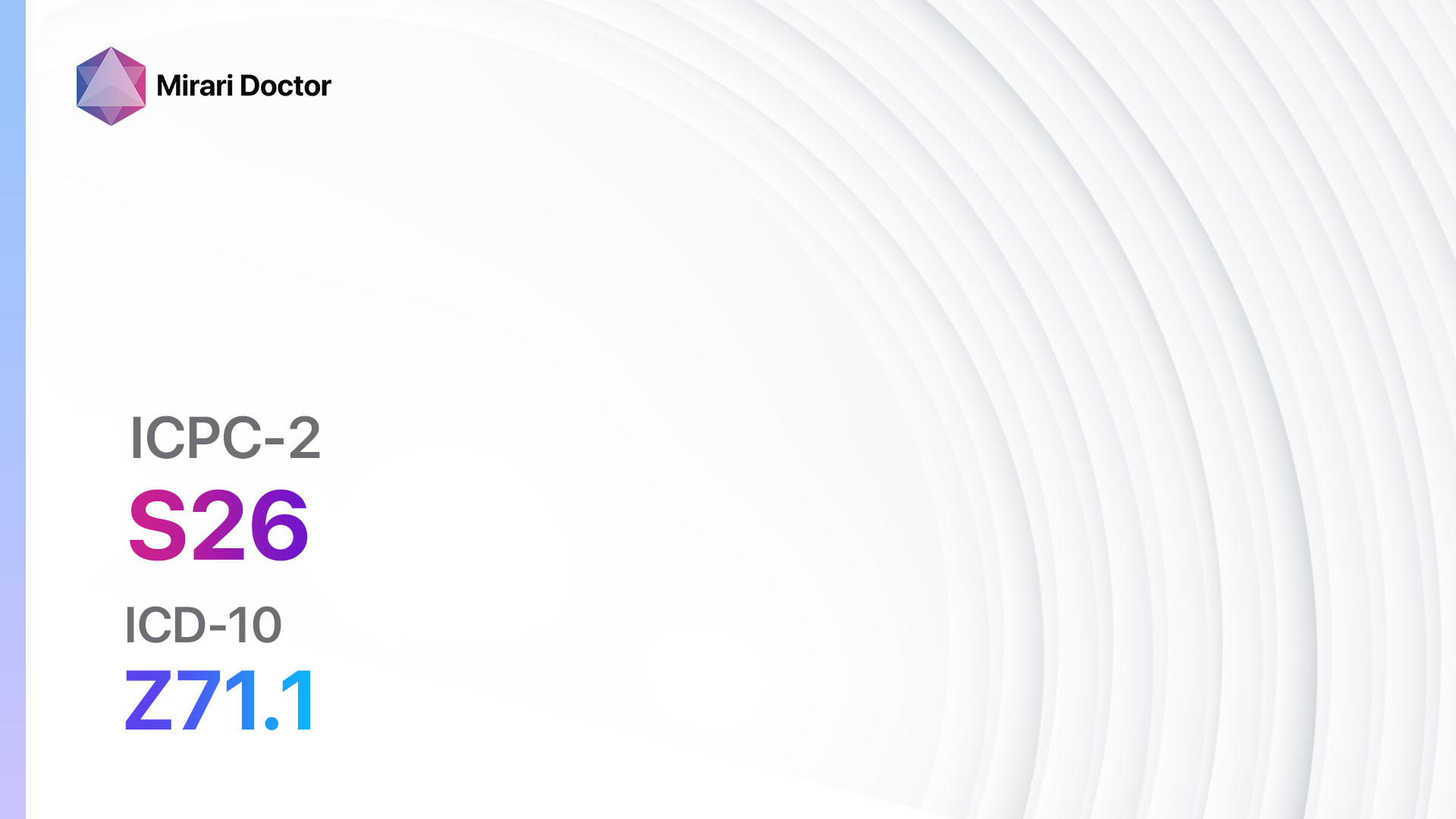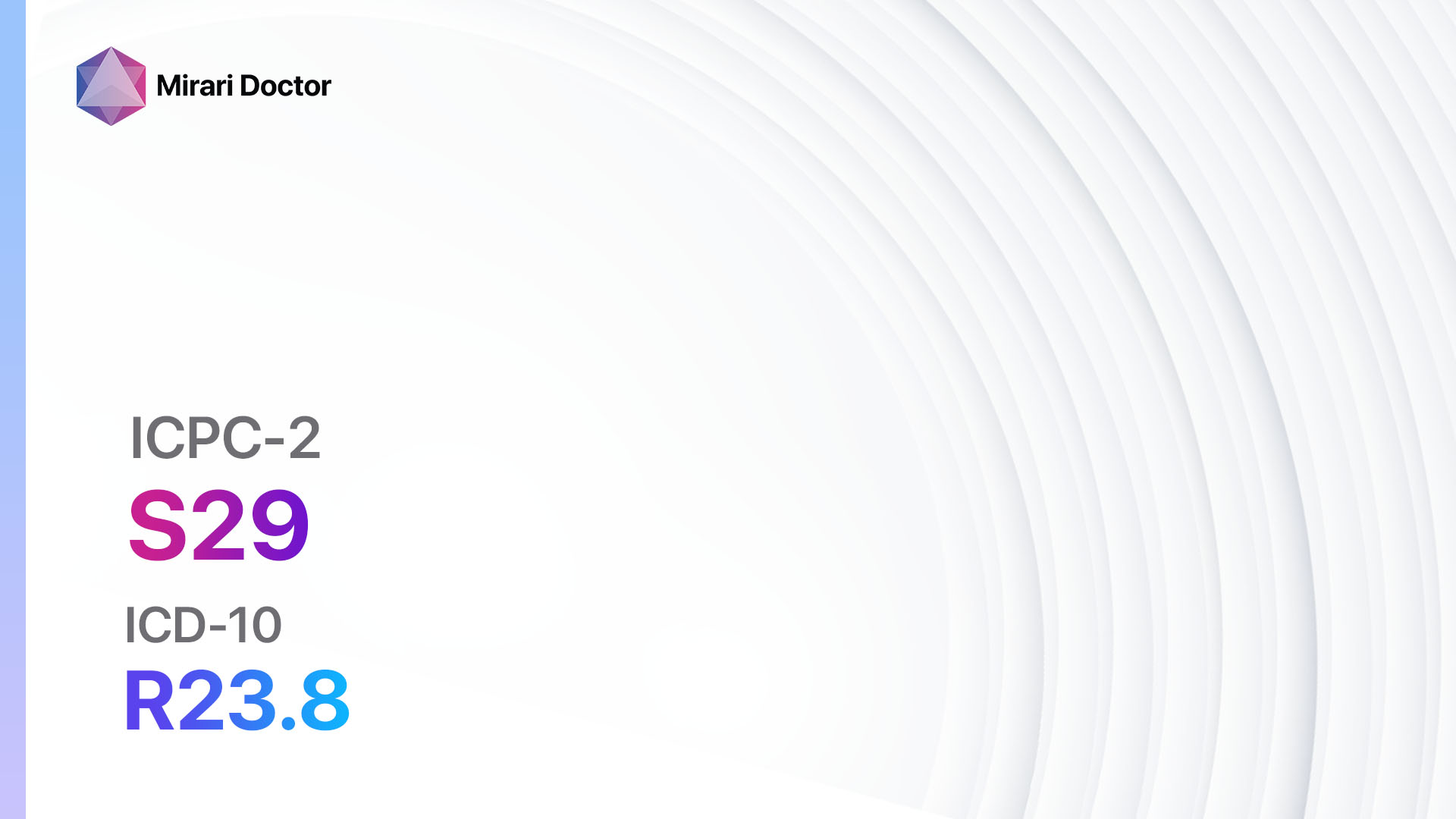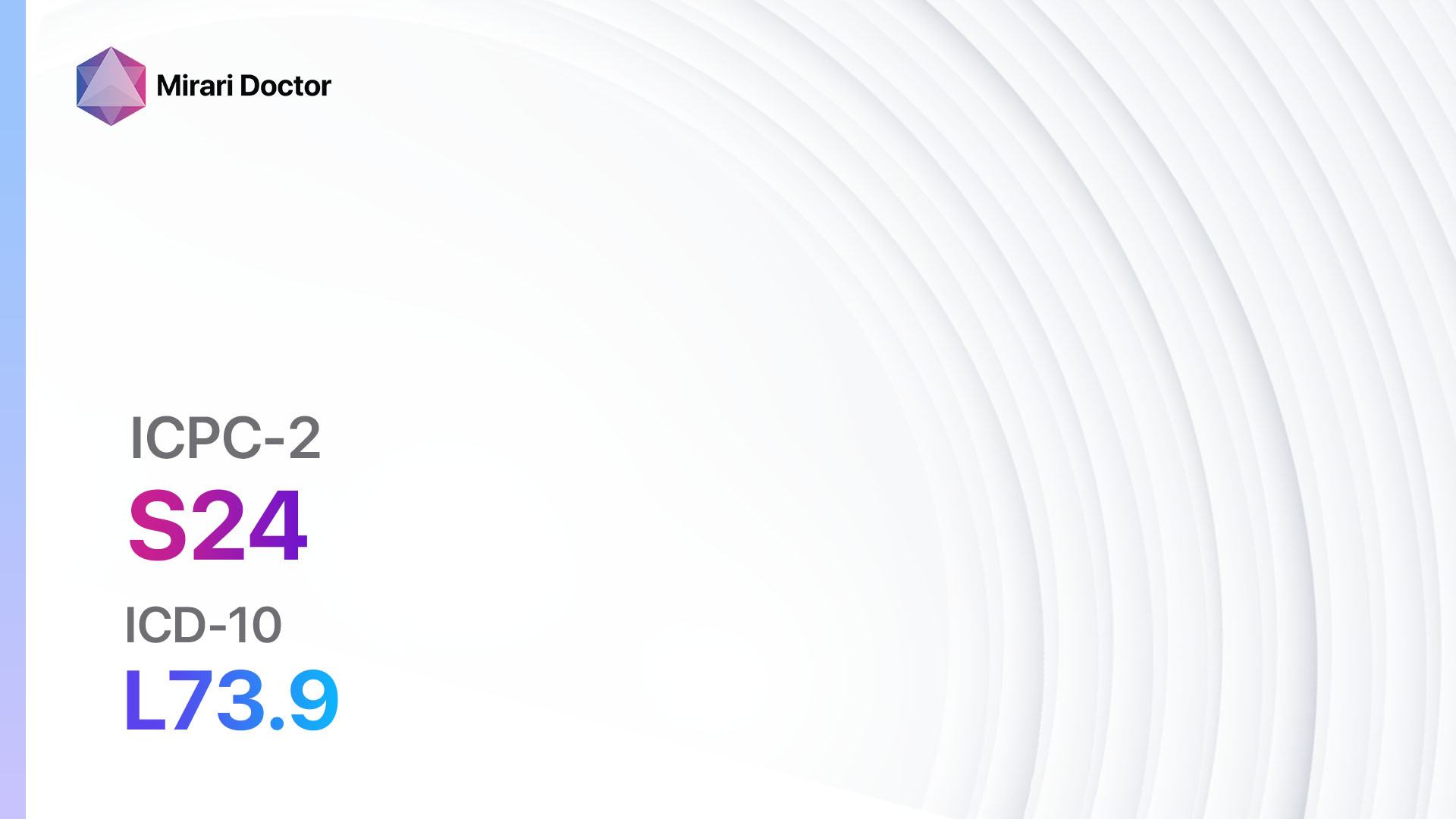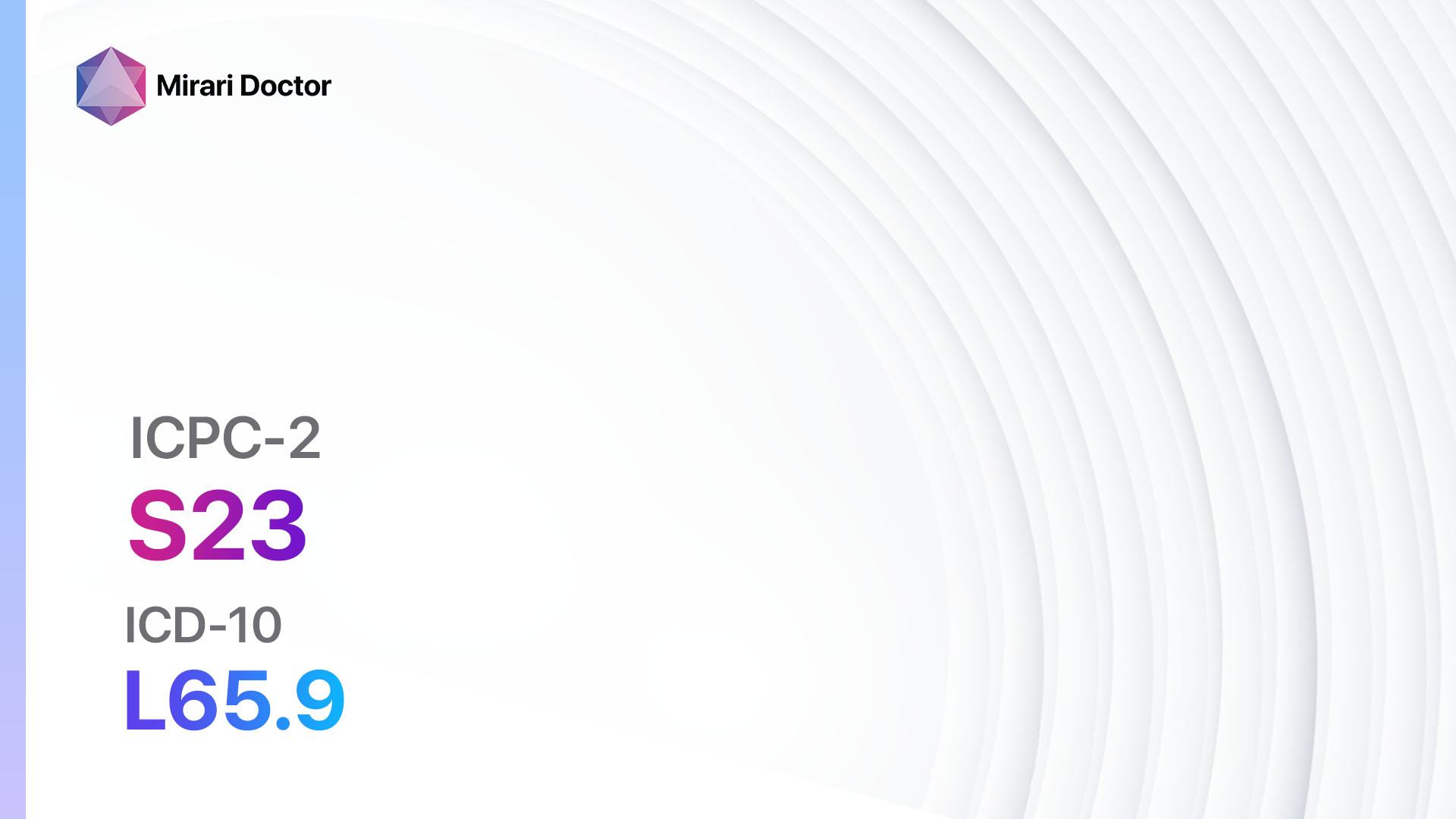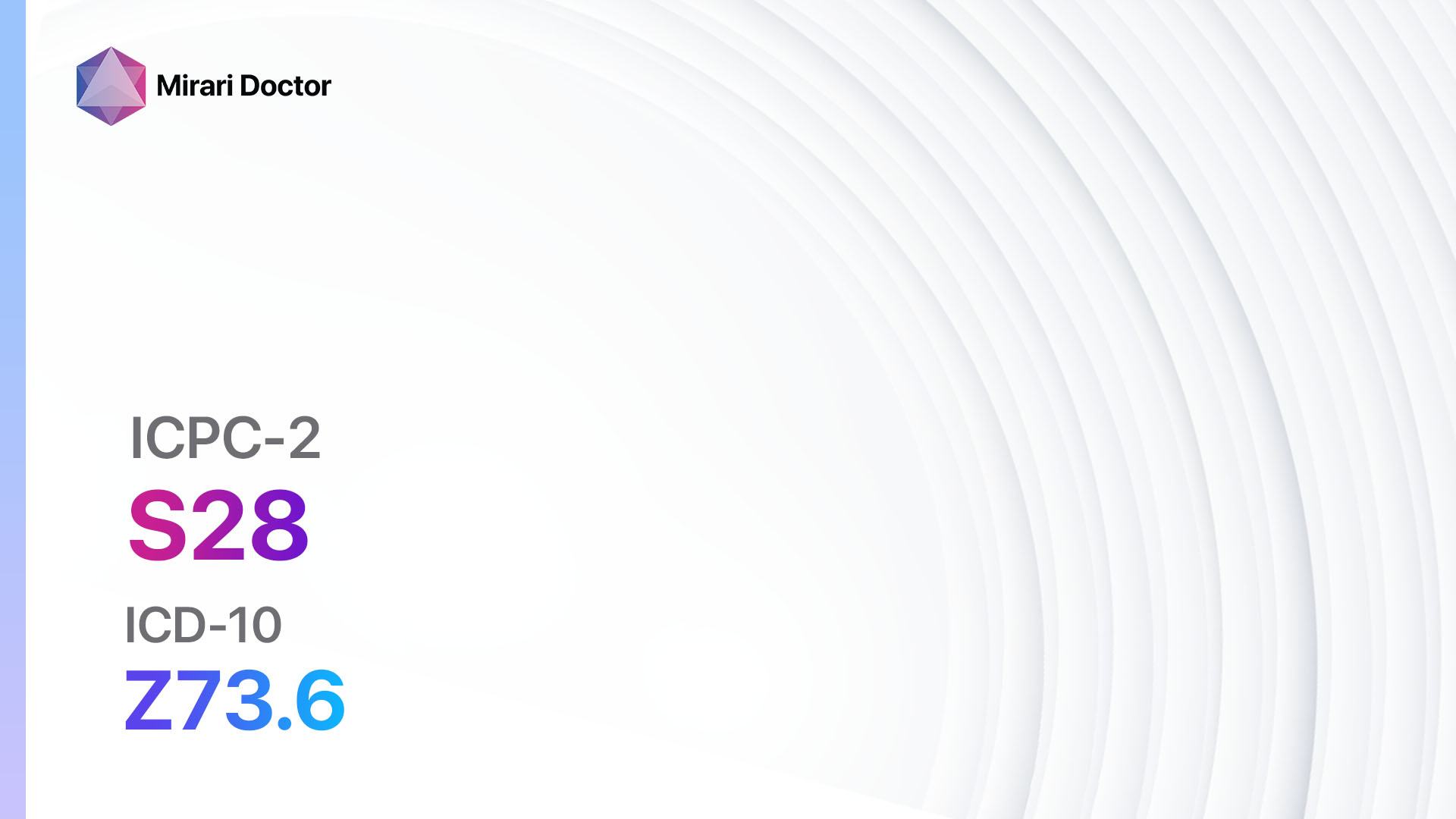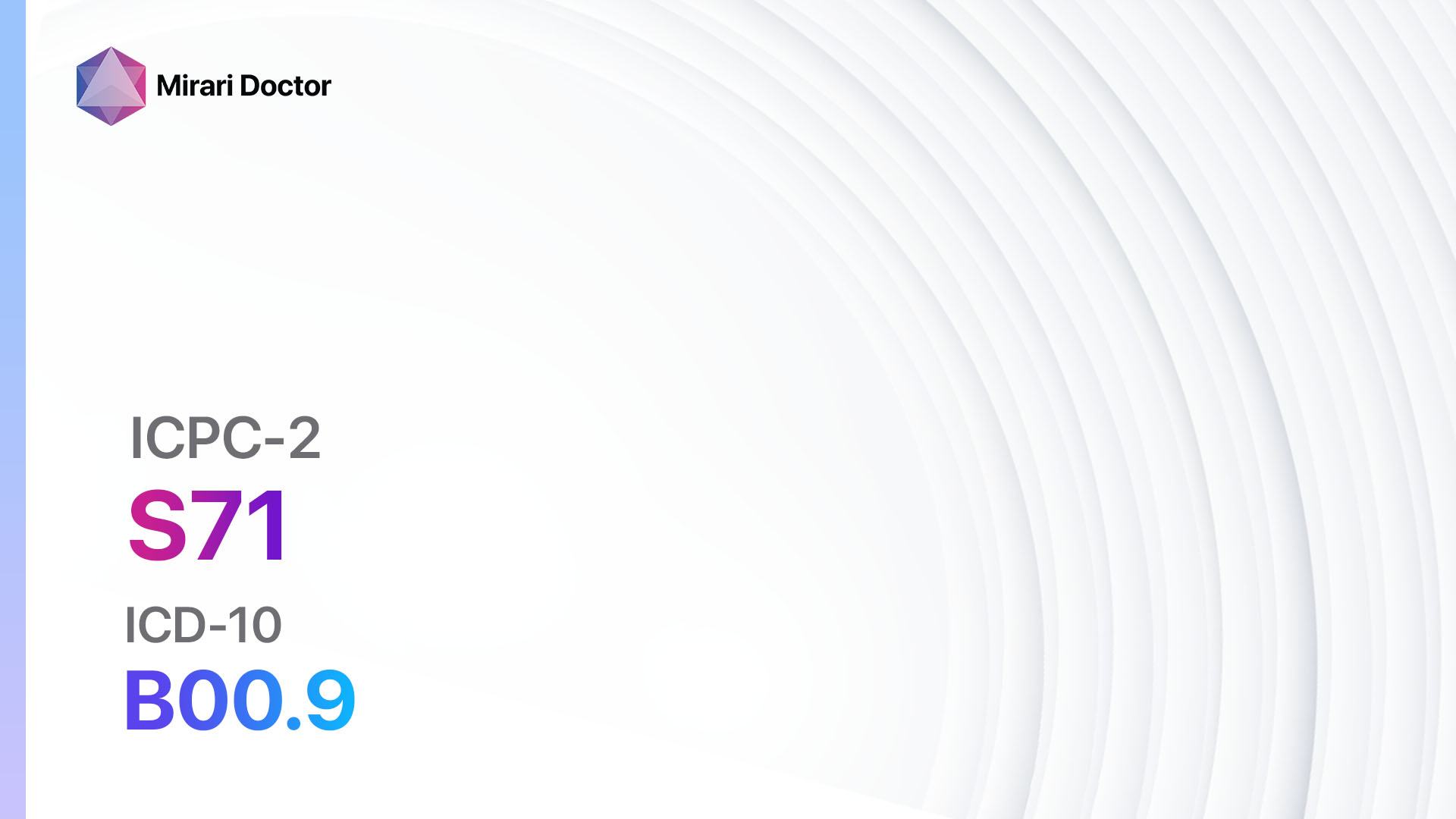
Introduction
Herpes simplex is a viral infection caused by the herpes simplex virus (HSV). It is a common infection that can cause painful sores or blisters on the skin or mucous membranes. There are two types of herpes simplex virus: HSV-1, which primarily causes oral herpes, and HSV-2, which primarily causes genital herpes.[1] This guide aims to provide a comprehensive overview of the diagnosis and management of herpes simplex.
Codes
Symptoms
- Oral herpes (HSV-1):
- Cold sores or fever blisters on the lips or around the mouth
- Tingling or itching sensation before the appearance of sores
- Painful blisters that rupture and form crusts
- Flu-like symptoms, such as fever, headache, and swollen lymph nodes[3]
- Genital herpes (HSV-2):
- Small red bumps, blisters, or open sores on the genitals, buttocks, or thighs
- Pain or itching in the genital area
- Flu-like symptoms, such as fever, headache, and swollen lymph nodes
- Painful urination or difficulty urinating[4]
Causes
- HSV-1: Usually transmitted through oral-to-oral contact, such as kissing or sharing utensils.
- HSV-2: Usually transmitted through sexual contact, including vaginal, anal, or oral sex.[5]
Diagnostic Steps
Medical History
- Gather information about the patient’s symptoms, including the location and duration of the sores or blisters.
- Ask about any previous episodes of herpes simplex infection.
- Inquire about any recent sexual activity or exposure to individuals with herpes.[6]
Physical Examination
- Inspect the affected area for the presence of sores, blisters, or ulcers.
- Palpate the lymph nodes to check for swelling or tenderness.
- Perform a genital examination for patients with suspected genital herpes.[7]
Determine Severity
- Classify the disease based on severity and depth of infection:
- Primary infection: Initial episode of herpes simplex infection.
- Recurrent infection: Subsequent episodes of herpes simplex infection.[8]
Laboratory Tests
- Viral culture: Collect a sample from the sore or blister to test for the presence of the herpes simplex virus.
- Polymerase chain reaction (PCR): Detects the genetic material of the herpes simplex virus in the sample.
- Blood tests: Serologic tests can determine the presence of antibodies to the herpes simplex virus.[9]
Diagnostic Imaging
- No diagnostic imaging is necessary for the diagnosis of herpes simplex.
Other Tests
- No other diagnostic tests are necessary for the diagnosis of herpes simplex.
Follow-up and Patient Education
- Provide information about the nature of the infection, including the potential for recurrent episodes.
- Discuss strategies to prevent transmission of the virus to others.
- Schedule follow-up appointments to monitor the patient’s progress and address any concerns.[10]
Possible Interventions
Traditional Interventions
Medications:
Top 5 drugs for Herpes simplex:
- Acyclovir:
- Cost: $10-$50 for a 30-day supply.
- Contraindications: Hypersensitivity to acyclovir.
- Side effects: Nausea, vomiting, headache.
- Severe side effects: Allergic reactions, kidney damage.
- Drug interactions: Probenecid, cimetidine.
- Warning: Adequate hydration is important to prevent kidney damage.
- Valacyclovir:
- Cost: $20-$100 for a 30-day supply.
- Contraindications: Hypersensitivity to valacyclovir.
- Side effects: Nausea, headache, dizziness.
- Severe side effects: Allergic reactions, kidney damage.
- Drug interactions: Probenecid, cimetidine.
- Warning: Adequate hydration is important to prevent kidney damage.
- Famciclovir:
- Cost: $20-$100 for a 30-day supply.
- Contraindications: Hypersensitivity to famciclovir.
- Side effects: Headache, nausea, diarrhea.
- Severe side effects: Allergic reactions, liver damage.
- Drug interactions: Probenecid, cimetidine.
- Warning: Regular liver function tests may be required.
- Penciclovir (topical):
- Cost: $20-$50 for a 30-day supply.
- Contraindications: Hypersensitivity to penciclovir.
- Side effects: Local skin reactions, itching.
- Severe side effects: Allergic reactions.
- Drug interactions: None reported.
- Warning: Avoid contact with eyes or mucous membranes.
- Docosanol (topical):
- Cost: $10-$20 for a 30-day supply.
- Contraindications: None reported.
- Side effects: Local skin reactions, itching.
- Severe side effects: None reported.
- Drug interactions: None reported.
- Warning: Apply the cream at the first sign of a cold sore.
Alternative Drugs:
- Lysine: An amino acid supplement that may help reduce the frequency and severity of herpes outbreaks. Cost: $10-$20 for a 30-day supply.
- Propolis: A resin-like substance produced by bees that has antiviral properties. Cost: $10-$20 for a 30-day supply.
- Tea tree oil: An essential oil with antiviral properties. Cost: $10-$20 for a 30-day supply.
- Aloe vera gel: May help soothe the skin and promote healing of herpes sores. Cost: $5-$10 for a 30-day supply.
- Echinacea: An herbal supplement that may boost the immune system and help prevent herpes outbreaks. Cost: $10-$20 for a 30-day supply.
Surgical Procedures:
- No surgical procedures are necessary for the treatment of herpes simplex.
Alternative Interventions
- Lifestyle modifications: Avoid triggers that may cause herpes outbreaks, such as stress, fatigue, and exposure to sunlight. Cost: Varies.
- Good hygiene practices: Keep the affected area clean and dry to prevent secondary infections. Cost: Varies.
- Dietary changes: Eat a balanced diet rich in fruits, vegetables, and whole grains to support the immune system. Cost: Varies.
- Stress management: Practice stress-reducing techniques, such as meditation or yoga, to minimize the risk of herpes outbreaks. Cost: Varies.
- Supplements: Certain supplements, such as vitamin C, zinc, and L-lysine, may help boost the immune system and reduce the frequency of herpes outbreaks. Cost: Varies.
Lifestyle Interventions
- Safe sexual practices: Use condoms or dental dams during sexual activity to reduce the risk of transmitting herpes to a partner. Cost: Varies.
- Avoid sexual activity during outbreaks: Abstain from sexual activity when experiencing symptoms to prevent transmission. Cost: N/A.
- Regular exercise: Engage in regular physical activity to boost the immune system and reduce stress. Cost: Varies.
- Healthy diet: Eat a nutritious diet that includes fruits, vegetables, lean proteins, and whole grains to support overall health. Cost: Varies.
- Adequate sleep: Get enough sleep to support the immune system and reduce stress. Cost: N/A.
It is important to note that the cost ranges provided are approximate and may vary depending on the location and availability of the interventions.
Mirari Cold Plasma Alternative Intervention
Understanding Mirari Cold Plasma
- Safe and Non-Invasive Treatment: Mirari Cold Plasma is a safe and non-invasive treatment option for various skin conditions. It does not require incisions, minimizing the risk of scarring, bleeding, or tissue damage.
- Efficient Extraction of Foreign Bodies: Mirari Cold Plasma facilitates the removal of foreign bodies from the skin by degrading and dissociating organic matter, allowing easier access and extraction.
- Pain Reduction and Comfort: Mirari Cold Plasma has a local analgesic effect, providing pain relief during the treatment, making it more comfortable for the patient.
- Reduced Risk of Infection: Mirari Cold Plasma has antimicrobial properties, effectively killing bacteria and reducing the risk of infection.
- Accelerated Healing and Minimal Scarring: Mirari Cold Plasma stimulates wound healing and tissue regeneration, reducing healing time and minimizing the formation of scars.
Mirari Cold Plasma Prescription
Video instructions for using Mirari Cold Plasma Device – S71 Herpes simplex (ICD-10:B00.9)
| Mild | Moderate | Severe |
| Mode setting: 1 (Infection) Location: 0 (Localized) Morning: 15 minutes, Evening: 15 minutes |
Mode setting: 1 (Infection) Location: 0 (Localized) Morning: 30 minutes, Lunch: 30 minutes, Evening: 30 minutes |
Mode setting: 1 (Infection) Location: 0 (Localized) Morning: 30 minutes, Lunch: 30 minutes, Evening: 30 minutes |
| Mode setting: 2 (Wound Healing) Location: 0 (Localized) Morning: 15 minutes, Evening: 15 minutes |
Mode setting: 2 (Wound Healing) Location: 0 (Localized) Morning: 30 minutes, Lunch: 30 minutes, Evening: 30 minutes |
Mode setting: 2 (Wound Healing) Location: 0 (Localized) Morning: 30 minutes, Lunch: 30 minutes, Evening: 30 minutes |
| Mode setting: 3 (Antiviral Therapy) Location: 0 (Localized) Morning: 15 minutes, Evening: 15 minutes |
Mode setting: 3 (Antiviral Therapy) Location: 0 (Localized) Morning: 30 minutes, Lunch: 30 minutes, Evening: 30 minutes |
Mode setting: 3 (Antiviral Therapy) Location: 0 (Localized) Morning: 30 minutes, Lunch: 30 minutes, Evening: 30 minutes |
| Mode setting: 7 (Immunotherapy) Location: 1 (Sacrum) Morning: 15 minutes, Evening: 15 minutes |
Mode setting: 7 (Immunotherapy) Location: 1 (Sacrum) Morning: 30 minutes, Lunch: 30 minutes, Evening: 30 minutes |
Mode setting: 7 (Immunotherapy) Location: 1 (Sacrum) Morning: 30 minutes, Lunch: 30 minutes, Evening: 30 minutes |
| Total Morning: 60 minutes approx. $10 USD, Evening: 60 minutes approx. $10 USD |
Total Morning: 120 minutes approx. $20 USD, Lunch: 120 minutes approx. $20 USD, Evening: 120 minutes approx. $20 USD |
Total Morning: 120 minutes approx. $20 USD, Lunch: 120 minutes approx. $20 USD, Evening: 120 minutes approx. $20 USD |
| Usual treatment for 7-60 days approx. $140 USD – $1,200 USD | Usual treatment for 6-8 weeks approx. $2,520 USD – $3,360 USD | Usual treatment for 3-6 months approx. $5,400 USD – $10,800 USD |
 |
|
Use the Mirari Cold Plasma device to treat Herpes simplex effectively.
WARNING: MIRARI COLD PLASMA IS DESIGNED FOR THE HUMAN BODY WITHOUT ANY ARTIFICIAL OR THIRD PARTY PRODUCTS. USE OF OTHER PRODUCTS IN COMBINATION WITH MIRARI COLD PLASMA MAY CAUSE UNPREDICTABLE EFFECTS, HARM OR INJURY. PLEASE CONSULT A MEDICAL PROFESSIONAL BEFORE COMBINING ANY OTHER PRODUCTS WITH USE OF MIRARI.
Step 1: Cleanse the Skin
- Start by cleaning the affected area of the skin with a gentle cleanser or mild soap and water. Gently pat the area dry with a clean towel.
Step 2: Prepare the Mirari Cold Plasma device
- Ensure that the Mirari Cold Plasma device is fully charged or has fresh batteries as per the manufacturer’s instructions. Make sure the device is clean and in good working condition.
- Switch on the Mirari device using the power button or by following the specific instructions provided with the device.
- Some Mirari devices may have adjustable settings for intensity or treatment duration. Follow the manufacturer’s instructions to select the appropriate settings based on your needs and the recommended guidelines.
Step 3: Apply the Device
- Place the Mirari device in direct contact with the affected area of the skin. Gently glide or hold the device over the skin surface, ensuring even coverage of the area experiencing.
- Slowly move the Mirari device in a circular motion or follow a specific pattern as indicated in the user manual. This helps ensure thorough treatment coverage.
Step 4: Monitor and Assess:
- Keep track of your progress and evaluate the effectiveness of the Mirari device in managing your Herpes simplex. If you have any concerns or notice any adverse reactions, consult with your health care professional.
Note
This guide is for informational purposes only and should not replace the advice of a medical professional. Always consult with your healthcare provider or a qualified medical professional for personal advice, diagnosis, or treatment. Do not solely rely on the information presented here for decisions about your health. Use of this information is at your own risk. The authors of this guide, nor any associated entities or platforms, are not responsible for any potential adverse effects or outcomes based on the content.
Mirari Cold Plasma System Disclaimer
- Purpose: The Mirari Cold Plasma System is a Class 2 medical device designed for use by trained healthcare professionals. It is registered for use in Thailand and Vietnam. It is not intended for use outside of these locations.
- Informational Use: The content and information provided with the device are for educational and informational purposes only. They are not a substitute for professional medical advice or care.
- Variable Outcomes: While the device is approved for specific uses, individual outcomes can differ. We do not assert or guarantee specific medical outcomes.
- Consultation: Prior to utilizing the device or making decisions based on its content, it is essential to consult with a Certified Mirari Tele-Therapist and your medical healthcare provider regarding specific protocols.
- Liability: By using this device, users are acknowledging and accepting all potential risks. Neither the manufacturer nor the distributor will be held accountable for any adverse reactions, injuries, or damages stemming from its use.
- Geographical Availability: This device has received approval for designated purposes by the Thai and Vietnam FDA. As of now, outside of Thailand and Vietnam, the Mirari Cold Plasma System is not available for purchase or use.
References
- Looker KJ, Magaret AS, May MT, et al. Global and Regional Estimates of Prevalent and Incident Herpes Simplex Virus Type 1 Infections in 2012. PLoS One. 2015;10(10):e0140765.
- World Health Organization. International Statistical Classification of Diseases and Related Health Problems 10th Revision (ICD-10)-WHO Version for 2019.
- Fatahzadeh M, Schwartz RA. Human herpes simplex virus infections: epidemiology, pathogenesis, symptomatology, diagnosis, and management. J Am Acad Dermatol. 2007;57(5):737-763.
- Gupta R, Warren T, Wald A. Genital herpes. Lancet. 2007;370(9605):2127-2137.
- Whitley RJ, Roizman B. Herpes simplex virus infections. Lancet. 2001;357(9267):1513-1518.
- Workowski KA, Bolan GA; Centers for Disease Control and Prevention. Sexually transmitted diseases treatment guidelines, 2015. MMWR Recomm Rep. 2015;64(RR-03):1-137.
- Corey L, Wald A. Genital Herpes. In: Holmes KK, Sparling PF, Stamm WE, et al., eds. Sexually Transmitted Diseases. 4th ed. New York, NY: McGraw-Hill; 2008:399-437.
- Kimberlin DW, Rouse DJ. Clinical practice. Genital herpes. N Engl J Med. 2004;350(19):1970-1977.
- Wald A, Ashley-Morrow R. Serological testing for herpes simplex virus (HSV)-1 and HSV-2 infection. Clin Infect Dis. 2002;35(Suppl 2):S173-S182.
- Patel R, Alderson S, Geretti A, et al. European guideline for the management of genital herpes, 2010. Int J STD AIDS. 2011;22(1):1-10.
Related articles
Made in USA


